Both GCSEs and Key Stage 2 tests have undergone substantial reform in the last few years, purportedly in the name of greater rigour.
Perhaps slightly surprisingly, some of these changes appear to have advantaged pupils who speak English as an additional language (EAL).
This blogpost looks at how results in reading and maths at Key Stage 2, and in English and maths at GCSE, have improved for EAL pupils since the reforms.
Key Stage 2
Key Stage 2 tests were reformed in 2016, following changes to the national curriculum in 2014. Test scores are now reported as scaled scores rather than national curriculum Levels. As before, the maths test consists of three parts. However, the former mental maths test (worth 20% of the total) was replaced a test of arithmetic (worth 36% of the total).
To investigate the impact of the changes on pupils with EAL, I’ve pulled together data for the last three years of old-style tests (2013 to 2015) and for the first three years of the new tests (2016 to 2018). I’ve converted total marks into standardised scores – that is, put everything onto a common scale with a mean of 0 and a standard deviation of 1.[1]
It’s worth us looking at two groups of EAL pupils – those who were first registered at a state school in England prior to Year 3, and those who were first registered in Year 3 or later. The latter group does not contribute to published progress (“value added”) measures.
I’ve written previously about how EAL is largely an indicator of ethnicity. Consequently, the comparison we’re going to make is between the results of EAL pupils and pupils with a white British ethnic background. I could have run the same analysis comparing ethnic groups that are predominantly composed of EAL pupils and produced similar results.
In reading, we do not see an improvement in attainment immediately after the reform among the group who were first registered in Year 2 or earlier. However, there was a later increase in 2018. Among pupils who were first registered in Year 3 or later, there was an increase in attainment following the reform in 2016. These trends are both shown on the chart below, as is that for the white British group.
But the picture in maths is much more interesting. The chart below shows how scores in maths changed for EAL pupils relative to white British pupils when the tests were reformed.[2]
EAL pupils first registered in Year 2 or earlier tended to achieve fractionally higher scores than white British pupils prior to reform, and the gap widened subsequently. EAL pupils first registered in Year 3 or later tended to be lower attaining prior to reform but their attainment improved thereafter.
To show the differences more clearly, the following chart shows the difference in maths attainment for both groups of EAL pupils relative to white British pupils before and after the change. I’ve also adjusted for changes in ethnic composition between the cohorts.[3]
By 2018, EAL pupils first registered before Year 3 had seen an increase in their maths test scores 0.12 standard deviations compared to white British pupils. And the increase for those admitted later was 0.2 standard deviations higher than that of white British pupils, although this estimate is slightly more uncertain due to smaller numbers of pupils.
Could the switch from mental maths, which involved listening to questions, to the written arithmetic test have played a part? (More on the differences between mental maths and arithmetic can be found here.) The chart below compares the maths scores of EAL pupils first registered before Year 3 and of white British pupils, breaking things down by test paper.
We can see that test scores in paper 1 (mental maths prior to 2016; arithmetic thereafter) increased by a greater margin relative to white British pupils than test scores in papers 2 and 3. Not only that, mental maths/ arithmetic scores of EAL pupils appeared to be declining prior to the reform.
GCSE
English and maths GCSEs were reformed for first teaching in September 2015 and the first awards on the new 9-1 scale were in summer 2017.
There were a number of changes to English and maths. The content of both was made more demanding. Controlled assessment and tiered papers were removed in English. Greater emphasis was placed on problem-solving and mathematical reasoning in maths. (A thorough summary of changes to GCSEs can be found here).
To examine the impact on EAL pupils, GCSE grades were converted into standardised scores – that is, as above, put onto a common scale with a mean of 0 and a standard deviation of 1.[4]
It’s again worth dividing EAL pupils into two groups: those first registered at a state school in England prior to Year 7 and those first registered in Year 7 or later. None of the pupils in the latter group contribute to progress measures in school performance tables.
The reforms appear to have contributed to a slight increase in attainment for EAL pupils in English. The same is not true for maths. Summary data for English comparing EAL pupils to white British pupils is shown below.
Of course, no-one in the real world works in standard deviation units. So let’s have a look at how things have changed in terms of the percentage of pupils achieving grade 4 or higher, equivalent to grade C or higher prior to reform.
The chart below shows an increase of around three percentage points for EAL pupils first registered prior to Year 7 and four to six percentage points among those first registered in Year 7 or later.
In summary
To sum up, since Key Stage 2 tests and GCSEs were reformed, the attainment of EAL pupils relative to white British pupils has increased in maths at Key Stage 2, but not really reading, and in English but not maths at GCSE.
One possibility for this is as a result of changes in how subjects are assessed. The Key Stage 2 mental maths test was replaced by one of arithmetic and controlled assessment no longer contributes to GCSE English.
Or maybe it’s due to the new content.
Or maybe something else.
I’ve assumed that pre-reform differences between EAL and white British pupils would persist following reform. But maybe there have been unobserved changes in group composition. Perhaps later EAL cohorts were more proficient in English or had a higher level of ability. But that’s for another day.
Want to stay up-to-date with the latest research from FFT Education Datalab? Sign up to Datalab’s mailing list to get notifications about new blogposts, or to receive the team’s half-termly newsletter.
1. Pupils who did not take the tests (e.g. those working below the levels of the tests) are assigned a mark of 0 prior to the standardisation.
2. Other groups of pupils classified as having English as a first language are not included in the chart.
3. Standard errors are clustered by school.
4. In this case by transforming the percentage of pupils achieving each grade using the inverse of the normal cumulative distribution.





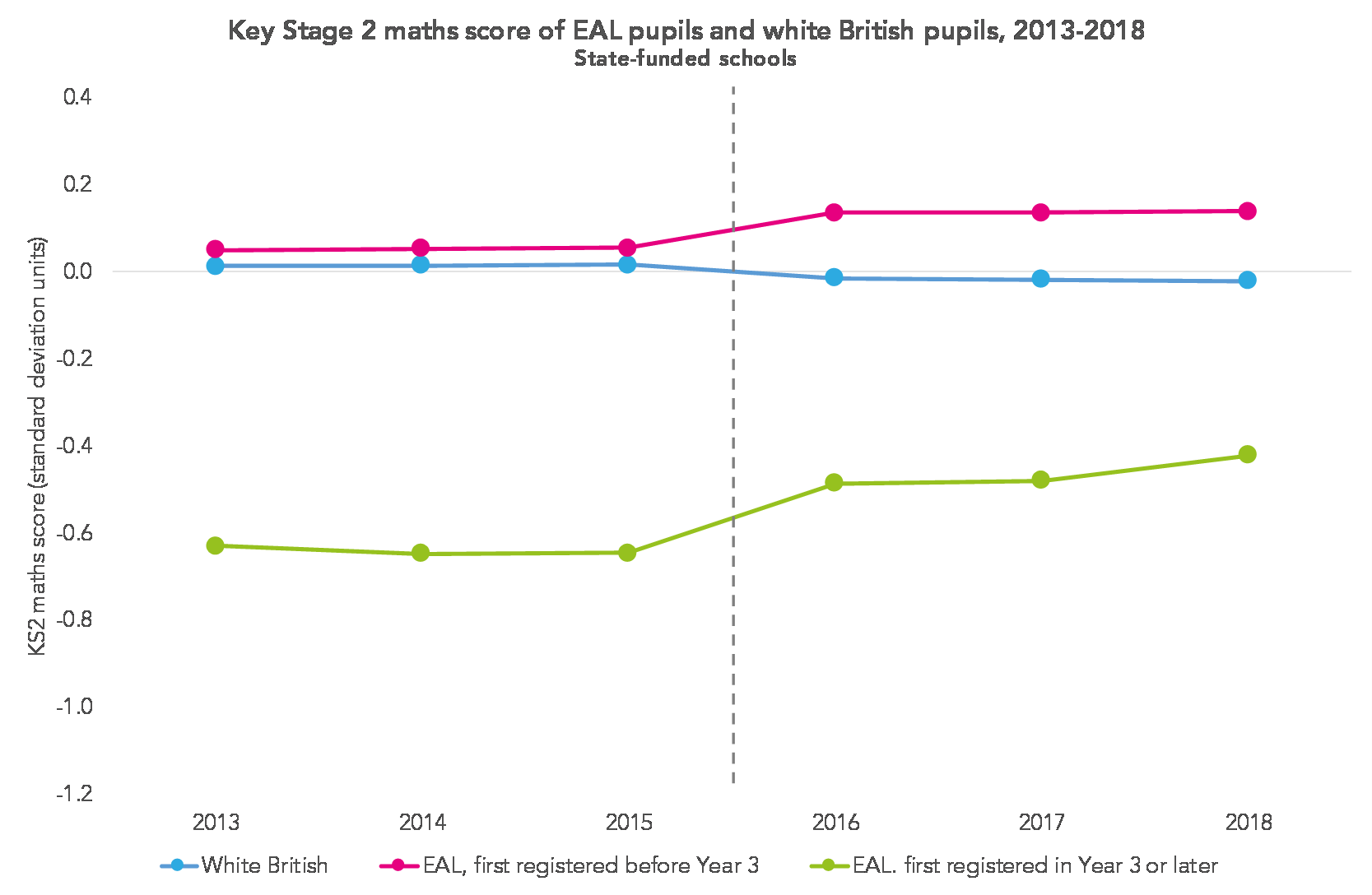
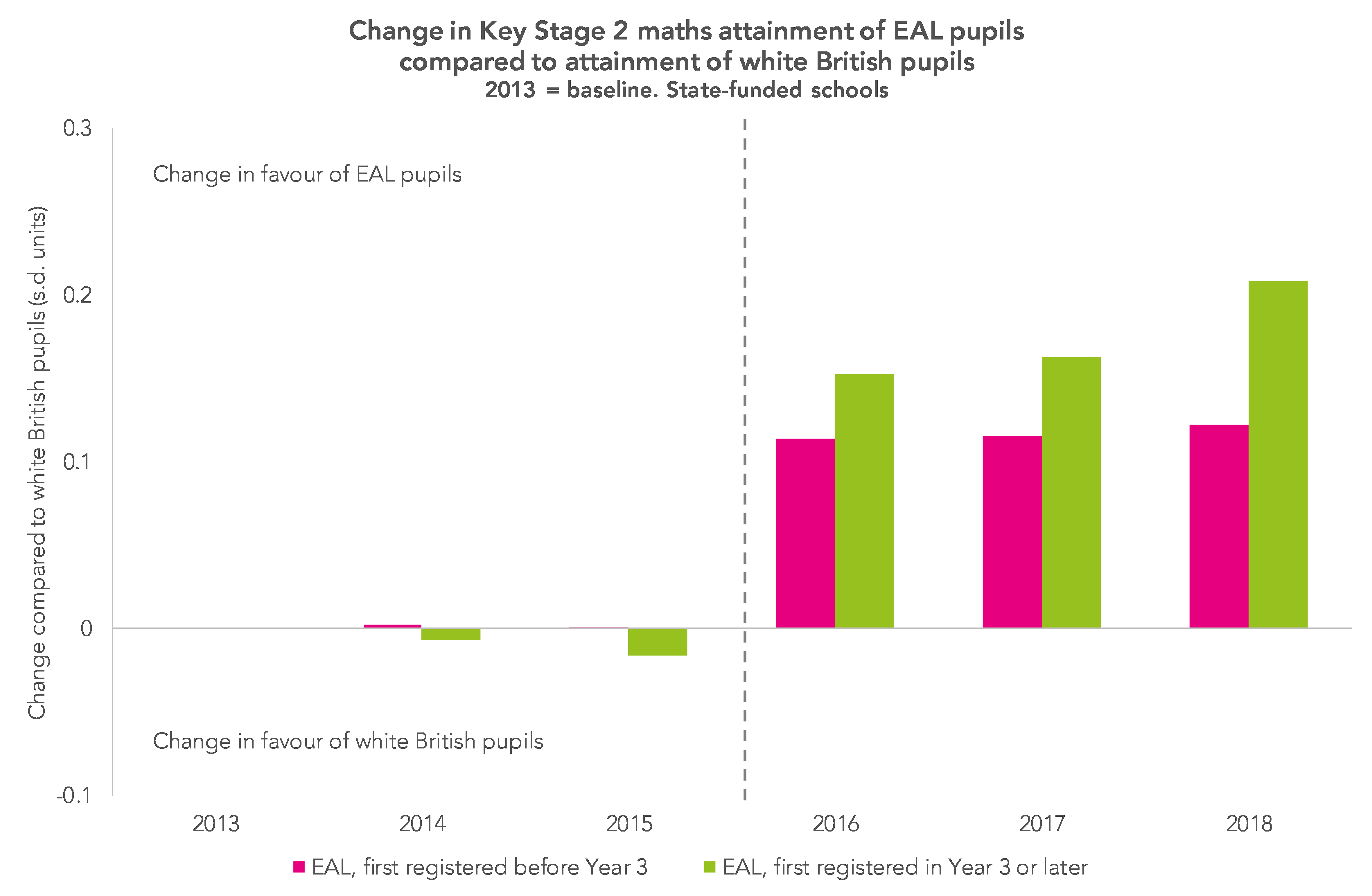
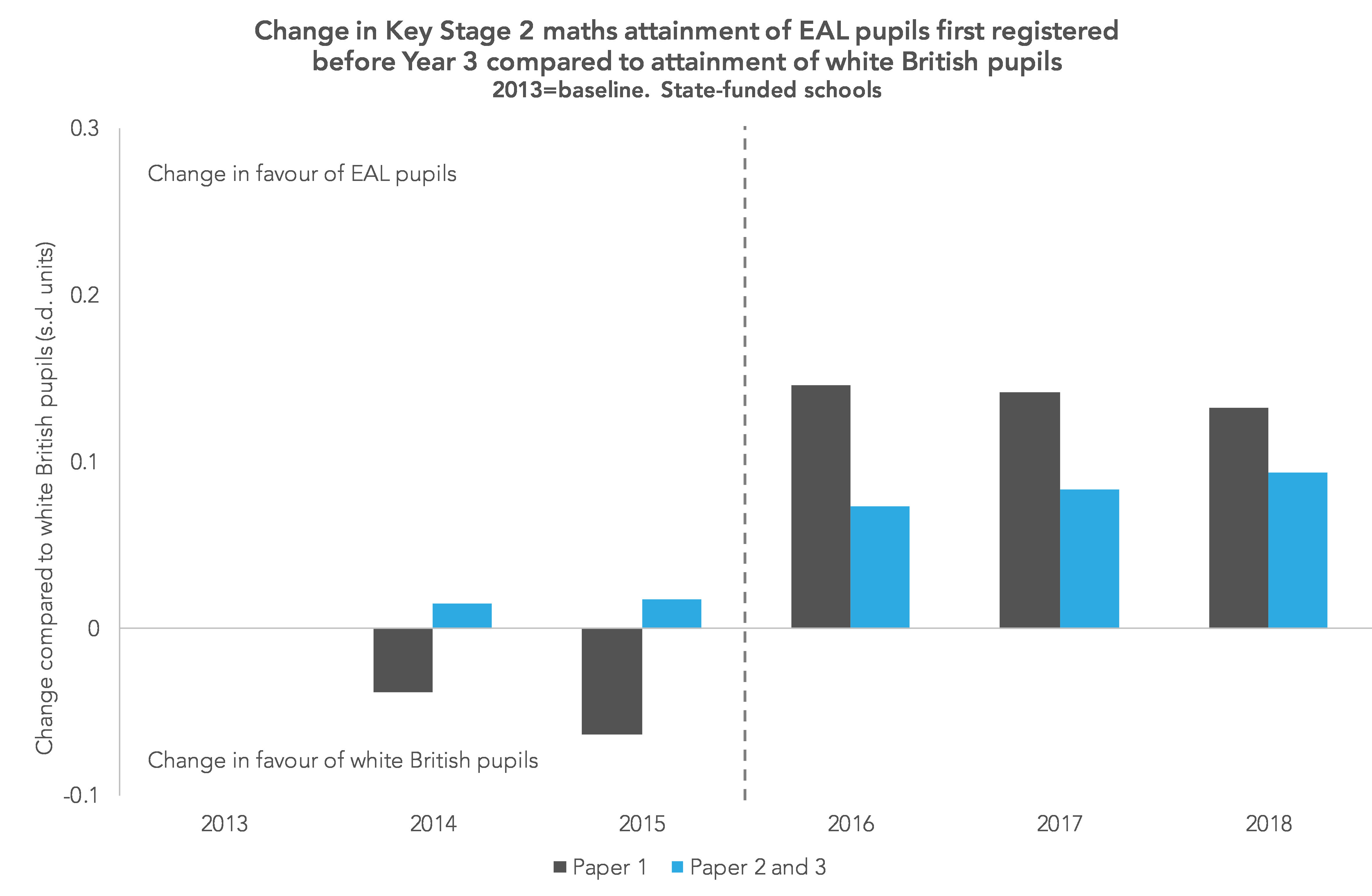
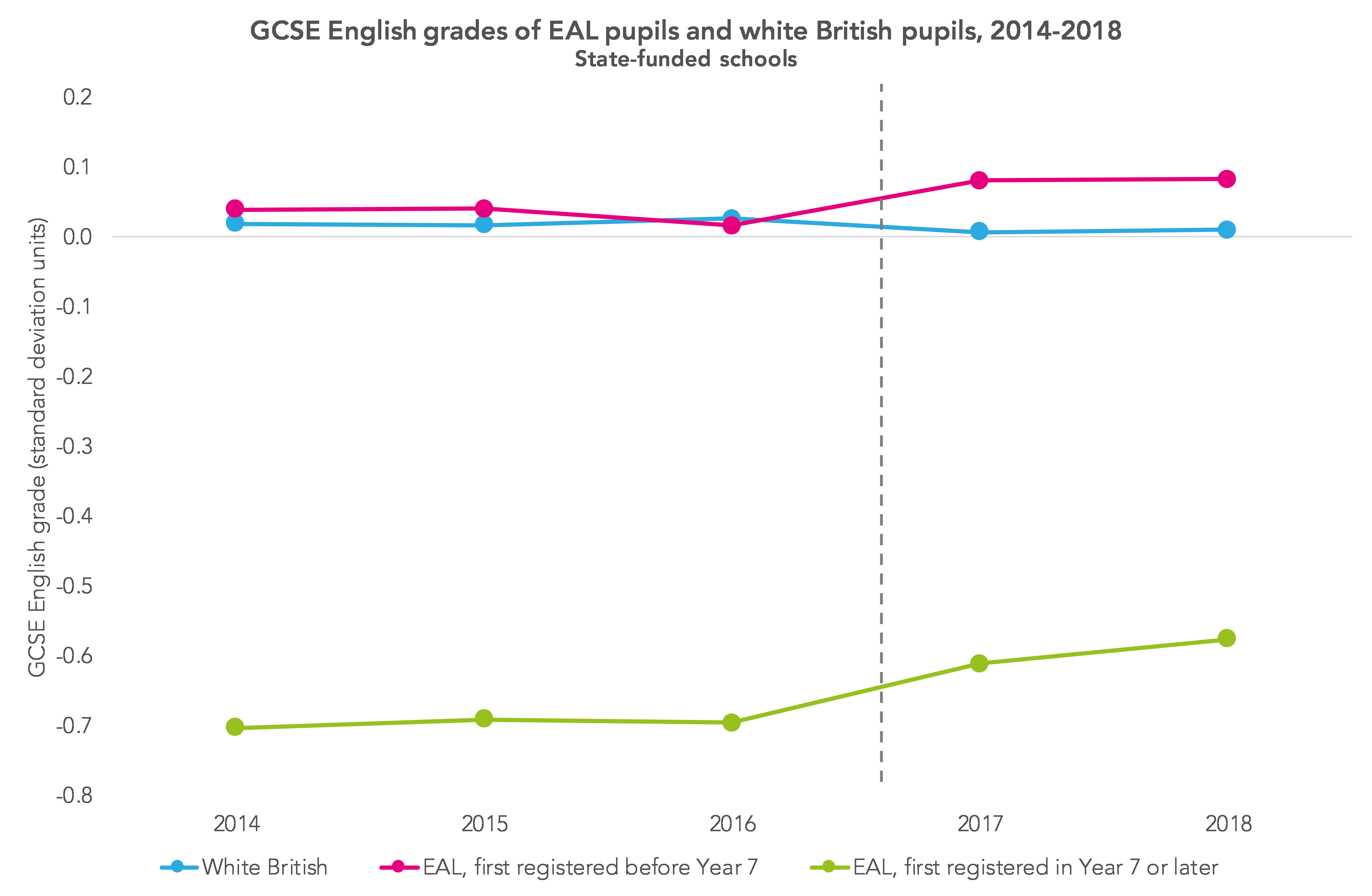
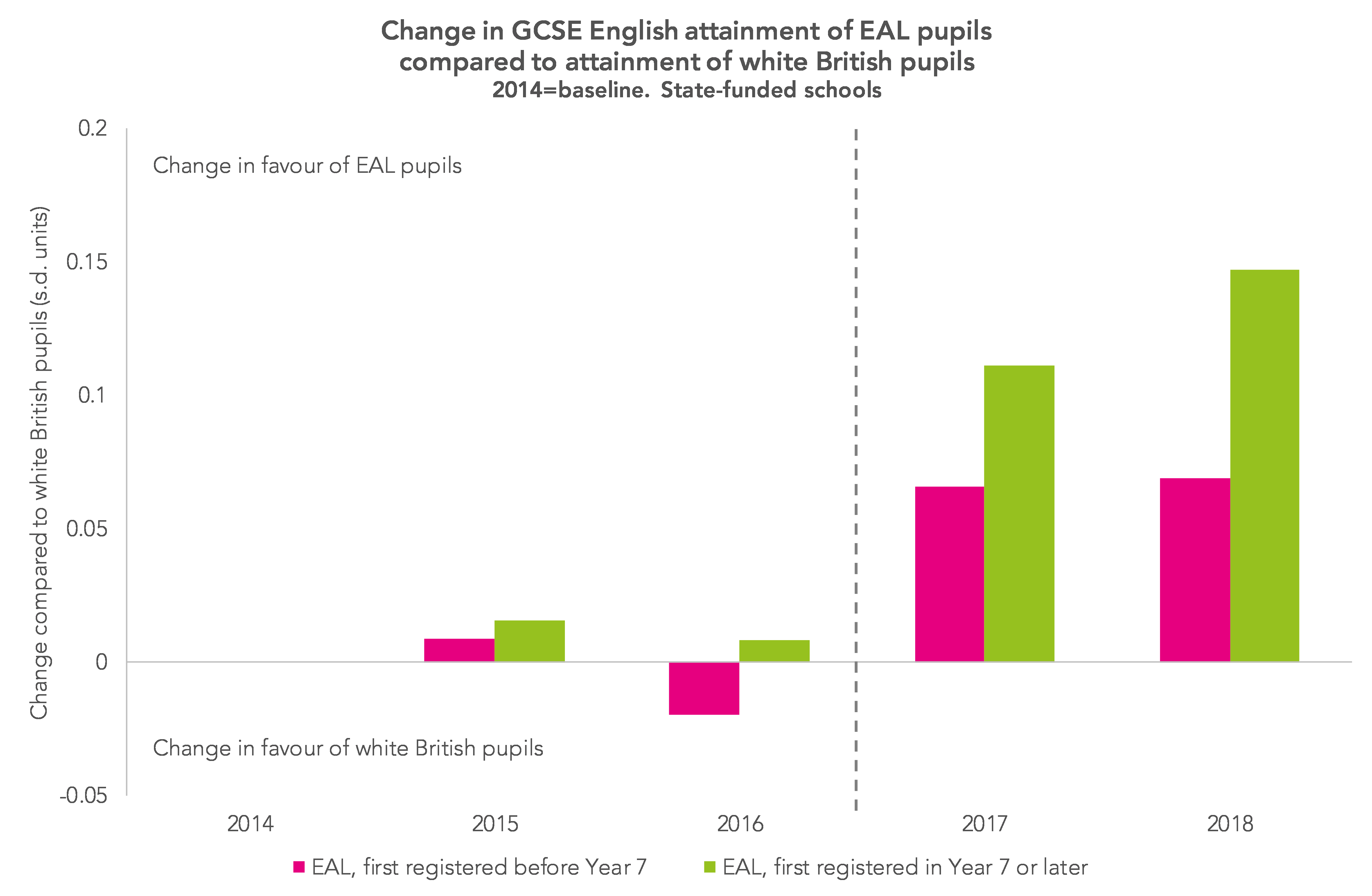

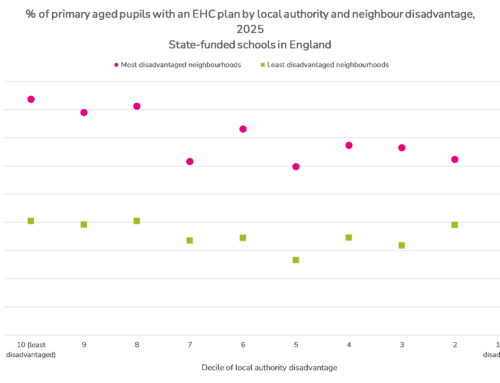

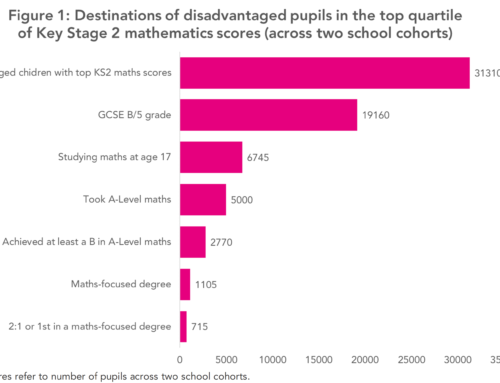

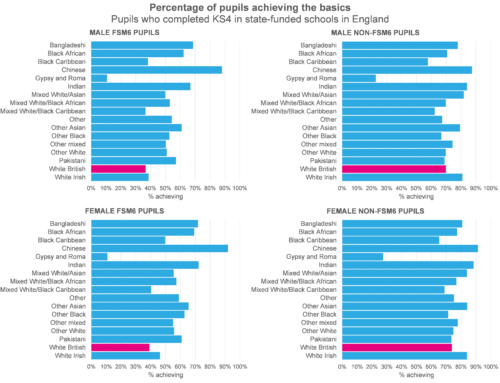
The later an EAL pupil is first registered, the less time they have had to learn English and to learn in English. However, later registration is also a reasonable proxy for the existence of literacy in the first language (with some exceptions, such as East European Roma).
I am curious about how this looks for GCSE Maths? Can you direct me to where I can get this information? Thank you, Sangary
Hi Sangary. Really sorry but I didn’t keep the charts for GCSE maths. From what I remember, the trends for EAL pupils relative to non-EAL pupils were pretty flat (i.e. didn’t look like there was any change following the reform).
Thank yoy Dave!
Hi Dave, really interesting blog thank you. Do you have any update on this in terms of the trends you identified within subsequent years?
Thanks Kathrine. No, I’ve not done anything more recent yet. Could be interesting to develop it further to examine if (and how) things changed during the COVID years and thereafter.